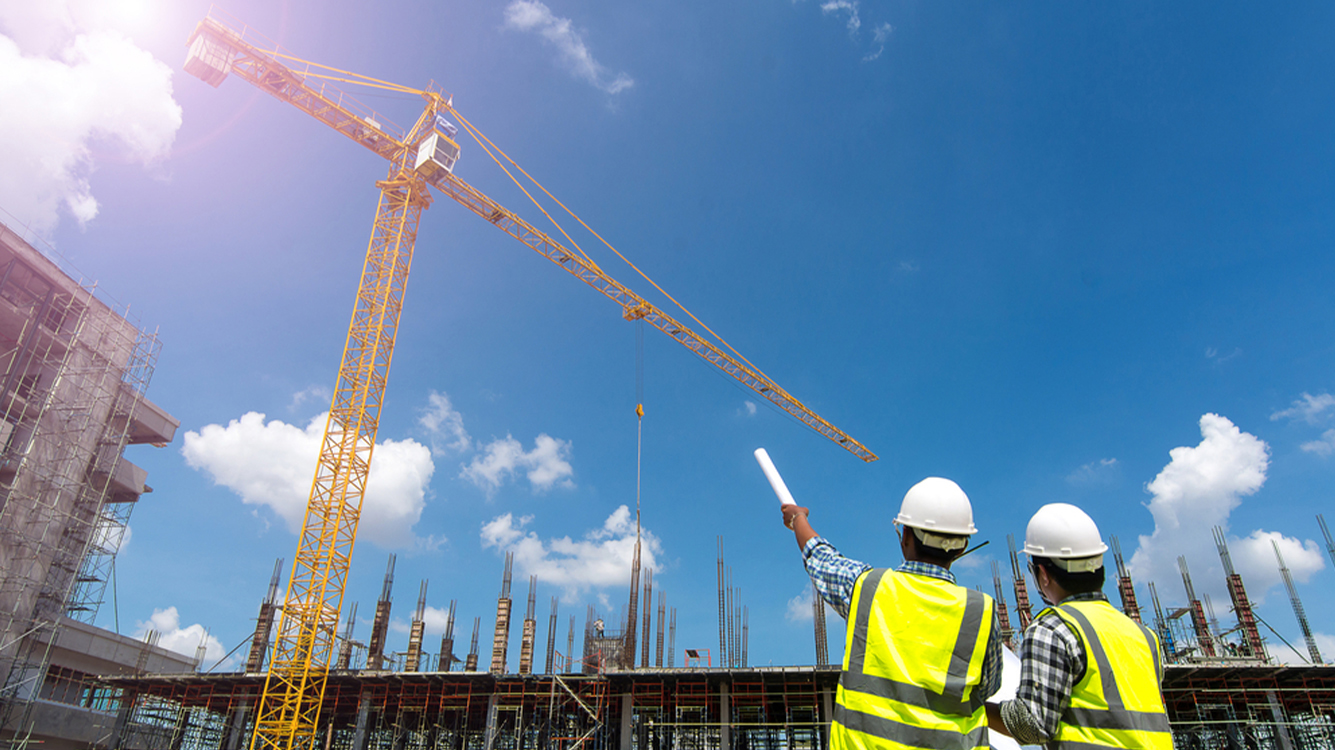Construction expanded again in July
Construction growth rate for single-family homes is highest in more than a year.

September 1, 2023
Spending on construction popped 0.7% in July as June spending was revised higher. Spending is now 5.5% above year-ago levels, the highest annual pace since November 2022. Spending was propped up by single-family residential construction and manufacturing infrastructure construction.
Construction input costs, as measured in the producer price index, were down 3.2% compared to a year ago in July. Energy costs have fallen significantly from their peaks in June of last year. However, cement and electrical equipment remain in short supply, leading to higher costs. Overall, contractors are seeing fewer supply chain problems compared to the last few years, although lower water levels in the Mississippi River and the Panama Canal are leading to increased backups and delays.
Private residential construction spending jumped 1.4% in July. Single-family construction surged 2.8%, the highest monthly gain since June 2021. Building permits for single-family homes have climbed above their January lows and are finally increasing on an annualized level. Builders have seen increased demand due to tight supply in the resale market, leading to a larger share of newly built homes on the market. Since mortgage rates climbed above 7% in August, demand is expected to wane as potential buyers are priced out.
Multifamily construction eked out a gain of 0.2% in the month. Multifamily buildings with five or more units currently under construction have been hitting record highs monthly since October 2022. As these units come on line, builders are pivoting away from multifamily construction. Permits are down 31% from a year ago.
Private nonresidential construction spending rose 0.5% in July. Manufacturing infrastructure continues to lead the charge, growing by 1.1% in the month and 71% annually. Computer and electronic manufacturing have been responsible for the bulk of these gains since January of this year and have been tripling in size on an annualized basis for six of the last seven months. Private investment has been pouring into battery and chip manufacturing plants after new legislation was passed in August of last year. Other notable gains in nonresidential construction spending occurred in commercial, specifically warehouse and automotive infrastructure.
Public construction spending fell 0.4% in the month. Federal spending dragged on overall spending; state and local spending lost a bit of ground as well. The largest component, highway and street construction, dropped 0.6% in the month but remains 12.1% higher than year-ago levels as the costs of cement, concrete and asphalt have risen over the year.
Builders are not able to ramp up fast enough.
Bottom Line
Increased building of homes and apartments is welcome news in a supply-constrained housing market. Rents have already begun to cool in regions where more apartments have come on line. In the single-family market, newly built homes only make up about 16% of all homes sold. Builders are not able to ramp up fast enough to make up for all of the undersupply concerns, especially in the hottest markets. This creates a floor for how low home prices can go and how much of a decline we can expect from housing inflation indicators to bring overall inflation down to the Federal Reserve's 2% target.
Explore more

Construction spending continues to grow
Multifamily and manufacturing construction show big yearly increases.

KPMG Economics
A source for unbiased economic intelligence to help improve strategic decision-making.

Low inventory boosts starts
Builder sentiment weakest in West and Midwest.
Subscribe to insights from KPMG Economics
KPMG Economics distributes a wide selection of insight and analysis to help businesses make informed decisions.
Meet our team

